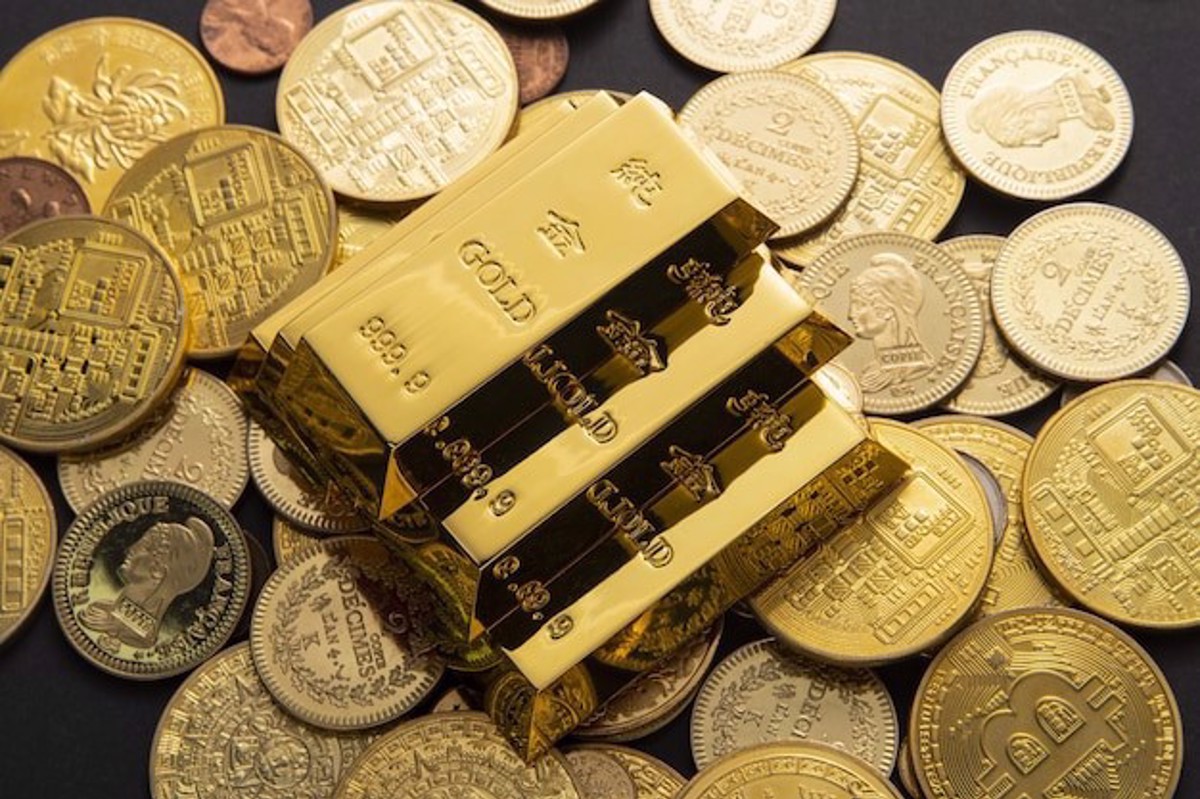Zlaté rezervy

What are gold reserves?
Gold reserves are the stock of gold held by central banks and governments as part of their monetary reserves. Why gold? Since ancient times, this metal has been a valued commodity and its use as a payment/monetary instrument goes back deep into history. And while much has changed since then, gold's role in the economy has remained strong.
Although it is no longer the case that all currency is backed by gold, gold reserves are still used to support currency stability in times of crisis or economic turmoil.
Gold reserves serve as a backup source of funding for central banks and governments, giving them the ability to intervene in the market and regulate the money supply.
At the same time, gold is a suitable investment option for individuals or institutions who want to invest their money in a stable and safe way, without much risk. Gold is one of the oldest and most recognised means of wealth preservation and this is not expected to change any time soon.
However, it is important to know that gold reserves are not a one-size-fits-all solution to stabilising the monetary system and may not always protect us against economic fluctuations. If the crisis is really severe and inflation is high, gold alone may not be able to bring the necessary stability to the monetary system. Holding gold reserves is also quite costly. Another disadvantage of gold reserves is that gold does not generate any direct income for the state. While other investments, such as bonds or stocks, can generate income, gold reserves only hold value.
History of gold reserves
During the 19th and early 20th centuries, the so-called gold standard, which was the direct pegging of the value of currency to the value of gold, became widespread in the monetary system. Under this system, each currency was pegged to a certain amount of gold, meaning that it was possible to exchange money for gold at a fixed price. Therefore, central banks held gold reserves in sufficient quantities to cover the money in circulation.
Gradually, as economies grew, the gold standard system became unsustainable (it was not possible to build up sufficient gold reserves to cover all the currency) and therefore the value of the currency today is not fixed to gold, but is based on the supply and demand of the currency. However, gold still has its place in central bank reserves because it is a truly stable store of value, unlike other commodities.
How do gold reserves work?
Gold reserves are created by buying physical gold on the international market. Banks can also buy gold directly from mining companies. They decide how much to buy and when based on many factors. In particular, the current inflation and state of the economy are important, and of course their expected future development. The geopolitical situation and international markets also play a big role.
If banks expect a fall in the value of the currency or a significant rise in inflation, they may decide to buy more gold to ensure a degree of stability. In 2022, for example, central banks bought the most gold ever since 1967.
But it's not just the anticipation of a crisis that leads banks to build up gold reserves. Some banks wish to hold a certain percentage of gold steadily in their portfolio to diversify their investment portfolio.
Central banks can then sell part of their gold reserves to private individuals or on the market to strengthen the currency in a crisis. However, the sale of gold reserves should be carefully planned as it may have long-term implications for the country's monetary policy.
Indeed, if the central bank were to sell a large amount of gold at once, it could lead to a decline in the value of gold and also in confidence in the country's currency. Therefore, when gold reserves are sold, it is usually done gradually and in small batches so as not to rock the market too much.
It is also important to remember that the sale of gold reserves is not the only monetary policy instrument and can be supplemented by other measures such as changes in interest rates or regulation of the banking sector.
This is also why the sale of gold reserves is usually the last resort for banks and they often try to use other monetary policy tools (such as interest rate changes or banking sector regulation).
Gold reserves of the States
The amount of gold reserves varies from country to country, depending on the size of the economy and even the political stability of the country. While gold reserves are held by almost all countries in the world, the largest gold reserves are concentrated in the hands of a few countries. Among the largest holders of gold reserves are the United States, Germany, Italy, France, Russia and China. Together, these countries hold nearly two-thirds of the world's total gold reserves.
For example, the United States holds approximately 261.5 million troy ounces of gold (just under 8,130 tonnes), representing almost 23% of total US gold reserves. Germany is close behind with the largest gold reserves, holding approximately 108 million troy ounces of gold (roughly 3 356 tonnes) and thus accounting for roughly 9% of the world's gold reserves.
(Troy ounce = approximately 31.1 grams of gold, explained in more detail in the Glossary).
On the other side of the ranking are the countries with the smallest gold reserves, such as Malta, Burundi, Fiji or Kenya.
Are there also countries that have no gold reserves? Yes. Specifically, Armenia, Azerbaijan, Cameroon, Nicaragua and, perhaps a little surprisingly, Canada. The latter is the only developed country (and a member of the G7) that currently holds no gold reserves. But this was not always the case, Canada sold the last of its gold reserves in 2016.
Instead, many central banks have increased the amount of their gold reserves in recent years, mainly in response to global economic uncertainty and geopolitical risks. For example, in 2022, according to the World Gold Council, the largest buyers of gold were Turkey (31.17 tonnes), Uzbekistan (26.13 tonnes) and India (17.46 tonnes). China and Russia, for example, are also increasing their gold reserves, but they are not always transparent in reporting their gold purchases, making it more difficult to determine exactly how much they have increased their gold reserves.
The table below gives an overview of gold reserves by the countries that have the most gold reserves according to official data. The table also includes some international organisations such as the IMF and the European Central Bank. Eurozone countries are also listed here in aggregate.
Officially reported gold reserves by country/organisation - TOP 20 (as of end-2021, source: IMF)
|
Amount of gold in millions of troy ounces |
Share of total gold reserves |
Share of government reserve assets |
What % of GDP are reserves |
|
|
USA |
261.5 |
23 % |
66 % |
3 % |
|
Německo |
108.0 |
9 % |
66 % |
7 % |
|
Itálie |
78.8 |
7 % |
63 % |
11 % |
|
Francie |
78.3 |
7 % |
58 % |
8 % |
|
Rusko |
74.0 |
6 % |
21 % |
36 % |
|
Čína |
62.6 |
5 % |
3 % |
20 % |
|
Švýcarsko |
33.4 |
3 % |
5 % |
137 % |
|
Japonsko |
27.2 |
2 % |
4 % |
28 % |
|
Indie |
24.2 |
2 % |
7 % |
21 % |
|
Turecko |
21.1 |
2 % |
35 % |
14 % |
|
Nizozemí |
19.7 |
2 % |
56 % |
6 % |
|
Evropská centrální banka |
16.2 |
1 % |
33 % |
1 % |
|
Taiwan |
13.6 |
1 % |
4 % |
73 % |
|
Kazachstán |
12.9 |
1 % |
68 % |
18 % |
|
Portugalsko |
12.3 |
1 % |
69 % |
13 % |
|
Uzbekistán |
11.6 |
1 % |
60 % |
51 % |
|
Saudská Arábie |
10.4 |
1 % |
4 % |
57 % |
|
Velká Británie |
10.0 |
1 % |
9 % |
6 % |
|
Libanon |
9.2 |
1 % |
48 % |
… |
|
Španělsko |
9.1 |
1 % |
18 % |
6 % |
|
Státy eurozóny dohromady |
346.4 |
30 % |
53 % |
8 % |
|
MMF |
90.5 |
8 % |
… |
… |
|
Banka pro mezinárodní vypořádání |
16.4 |
1 % |
… |
… |
Sources: IMF, International Financial Statistics and World Economic Outlook.
Do you want to create your own gold reserves? With us you can! You can save in gold and protect your savings from inflation from CZK 500 per month.
Gold savings from the Czech Mint
 čeština
čeština
 slovenčina
slovenčina
 english
english
